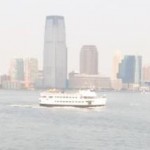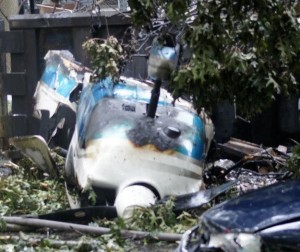Fed. Government Says Car Safety Technology Should Be Mandatory
The National Transportation and Safety Board (NTSB) has spoken out on the latest advancements in automobile safety, and made a recommendation that these high-tech tools be mandated in all new vehicles.
According to the Associated Press, there are many specific safety features that the NTSB could employ to significantly increase road safety and decrease the number of auto accidents. Those safety technologies include:
- Lane-departure warning that tells drivers when the car is going into another lane without signaling.
- Forward collision warning that can alert or apply brakes when an accident is imminent
- Adaptive cruise control that automatically adjusts speed depending on traffic conditions
- Electronic stability control which automatically applies brakes to individual wheels
Some cars already have these features installed, namely, the more expensive models. But, the NTSB says safety shouldn’t be something for only the wealthiest of us. Continue reading
Long Island Small Plane Crash Kills Two
A small plane crashed into a Long Island residential neighborhood early this week, killing two and injuring one. The National Transportation Safety Board is investigating the cause of the accident and their findings could reportedly take up to one year.
According to MyFoxNY.com, the accident happened about one mile north of the Brookhaven Airport. When the plane went down, the wreckage caught fire.
Although officials aren’t sure who was piloting, 53-year old David J. McElroy died at the scene, 60-year old Jane Unhjem later diet at Stony Brook University Medical Center. Her husband, 61-year old Erik Unhjem is listed in critical condition and is said to be “fighting for his life.”
Officials believe the pilot pulled the nose of the plane up just before it was to hit a house, then fell to the street. Witnesses said it was obvious the plane was in trouble as it came overhead. Continue reading
NTSB Blames Driver Fatigue for Fatal Bus Crash
In an investigation that’s lasted over a year, and one we blogged about just last month, the National Transportation Safety Board released its findings in a final hearing last week, pointing to driver fatigue and speed as the causes in a New York bus crash that ultimately killed 15 people.
The bus accident occurred in March 2011 as a bus carrying 32 people was heading towards Manhattan from a trip to the Mohegan Sun casino in Connecticut. It was before dawn when the bus hit a guardrail, rolled on its side and slid into a large sign post, shearing off the top of the bus and killing several people instantly.
In all, 15 were killed and 7 were seriously injured. Continue reading
2010 Staten Island Ferry Accident Blamed on “Malfunction”
 The National Transportation Safety Board released the findings of their investigation into the crash of a ferry in Staten Island two years ago. The crash didn’t prove fatal, but injured 50 people, three of them seriously.
The National Transportation Safety Board released the findings of their investigation into the crash of a ferry in Staten Island two years ago. The crash didn’t prove fatal, but injured 50 people, three of them seriously.
According to CNN, the NTSB found the accident was caused by the malfunctioning solenoid, a part in the propulsion unit. This malfunction made one of the propellers unresponsive to the commands of the ferry’s pilot.
Unfortunately, the malfunction wasn’t recognized until seconds before the crash, when it was too late to take evasive action, making the crash “unavoidable.”
“The pilothouse crewmembers were unaware of the loss of propulsion control until seconds before the accident,” said the report from the NTSB, removing any blame for the accident from the crew.
This wasn’t the first ferry accident for the boat known as the Andrew Barberi. In 2003 it was involved in another crash. This time it hit a pier in Manhattan, killing 11 people and injuring 70. Continue reading
New developments in New York City bus accident that left 15 dead
On the one-year anniversary of the New York City bus crash that left 15 people dead and injured 18 others, the National Transportation Safety Board (NTSB) announced that it will meet on June 5 to determine the probable cause of the crash. Although the NTSB investigation into the bus accident is still in its final stages, early speculation about alcohol or drug use by the bus driver as a possible cause for the tragedy appears to have been without merit.
In addition to the driver’s negative toxicology test results for drugs and alcohol, NTSB investigators have also found no mechanical problems that would have prevented the driver from safely operating the tour bus prior to or during the crash sequence. The list of potential causes board members will be evaluating at the June 5 meeting includes driver error, highway surface or design defects, non-mechanical vehicle factors and motor carrier oversight failures. Continue reading
